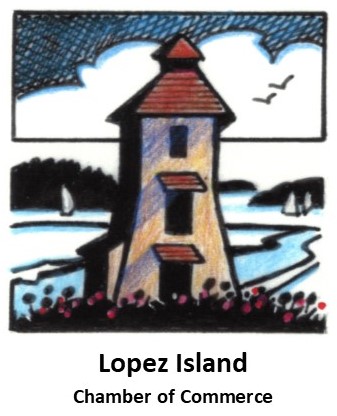Responsible Wildlife Watching In The San Juans
Our guide for common San Juan Islands wildlife, and tips to keep them, and you, safe!
Let us acknowledge that we reside on the ancestral lands and waters of the Coast Salish people who have called this place home since time immemorial and let us honor inherent, aboriginal, and treaty rights that have been passed down from generation to generation.
In addition to beautiful scenery and interesting history, the San Juan Islands are home to a rich variety of wildlife. Whether you have a quiet picnic or go for a long hike, seeing and hearing a range of wild creatures can add to your enjoyment of this special place. We have to remember to be cautious, courteous and respectful when around areas of known or suspected wildlife activity.

Tips for Better Wildlife Watching
Slow and Quiet - Move slowly and quietly. If you move quickly and make lots of noise, most wild animals will be gone long before you realize they are there.
Listen and Look - Use your ears as well as your eyes. Often the first clue that a wild animal is nearby is a sound - a few cheeps from the branches above your head, or a rustle in the bushes.
Sit and Watch - Choose a good spot, sit quietly, and look around. It’s more rewarding to watch animals acting naturally, unaware that you are there.
Not Too Close - Don’t be tempted to move closer to get a better look or a good photo. Use binoculars to watch from a distance or a telephoto lens to take photos. If an animal reacts to your presence, you are too close.

The foxes in the grasslands of American Camp and Cattle Point on San Juan Island are beautiful and curious creatures. Typically unafraid of humans, foxes can be bold due to their association of humans with food. Although these critters are cute, please do not feed them! Secure garbage in wildlife-proof containers and maintain a safe distance when photographing them. It can be tempting to approach them, especially the playful kits, but the best photographs come from animals who aren’t disturbed.
NOTE: It is illegal to willfully remain near or approach wildlife within ANY distance that disturbs or displaces the animal. **
Read more about The Foxes of American Camp by naturalist and photographer Monika Wieland Shields.
For boaters, encountering whales and other sea creatures can be an exciting experience. But remember to abide by the Be Whale Wise guidelines to ensure everyone's safety. Do not approach or position your vessel closer than 300 yards to any orca whale in the U.S and do not approach or get closer than 100 yards to any other marine mammals or birds, whether on the water or on land. Maintain a speed of seven knots or less when within a half nautical mile of whales.
In the presence of whales, kayakers should raft up, stop paddling, and wait until the animals are at least 400 yards away.


Every June through August, nearly 2,000 new seal pups are born around the Islands. Although it can be thrilling to see these adorable, doe-eyed youngsters sunning on the beach or bobbing in the water next to their mothers, it is important to make sure that our bustling human population does not hinder the seals’ well-being. How can you help? The best thing to do is to give it space! Zero human interference actually maximizes the pup’s chances for survival.
If you come across a pup this season, please follow these simple rules:
- Do not touch or move it
- Do not feed or pour water on it
- Do not try to drive it back into the water
- DO keep people and dogs at least 100 yards away (it’s the law!)
- DO call the stranding hotline 1-800-562-8832
- DO educate those around you to do the same!
Black-tailed deer are common in the islands and can frequently be seen grazing in meadows or along the roadside. When driving or hiking through the islands, watch out for deer crossing the roads and trails. Slower speeds are best as deer are known to jump out with little or no warning. Where there's one, there's often more, so keep an eye out!
While they are cute and friendly, deer are still wild animals that deserve respect and space. Do not feed the deer or attempt to pet them. Help preserve the beauty of the islands and keep a safe distance from the local creatures.


Tide pools are fascinating microcosms of marine life only revealed at low tides. There can be a dozen species in a rocky crevice the size of your bathroom sink. While exploring, don't forget to be a good GUEST!
G = GENTLE touching. And clean fingers, please! Beach creatures would prefer you use just one wet, well-rinsed finger to explore with. If whatever you are examining appears to be stuck, don't try to pry it off.
U = USE your head - to measure rocks! Any rock you turn over on the beach should be no larger than what is between your ears. Turn gently.
E = EVERYTHING stays. Once you are done exploring under a rock, turn it back over carefully. Leave the beach at the beach.
S = STEP lightly! The beach is a wet and slippery place and falling on barnacles is...uncomfortable. You also don't want to miss - or squish - any of the cool critters by running past them too quickly!
T = TAKE your belongings. If you brought it with you, take it home. If you find something that does not belong on the beach, such as trash, be awesome and take that as well.
Our thanks to Harbor Wildwatch for these tips!














